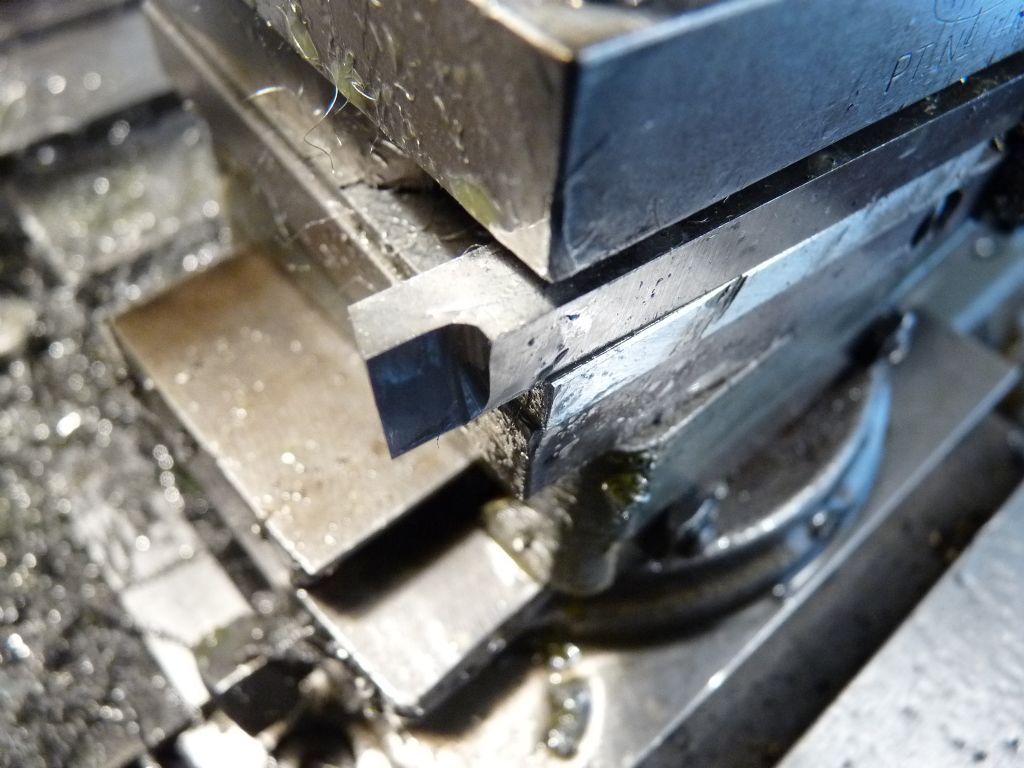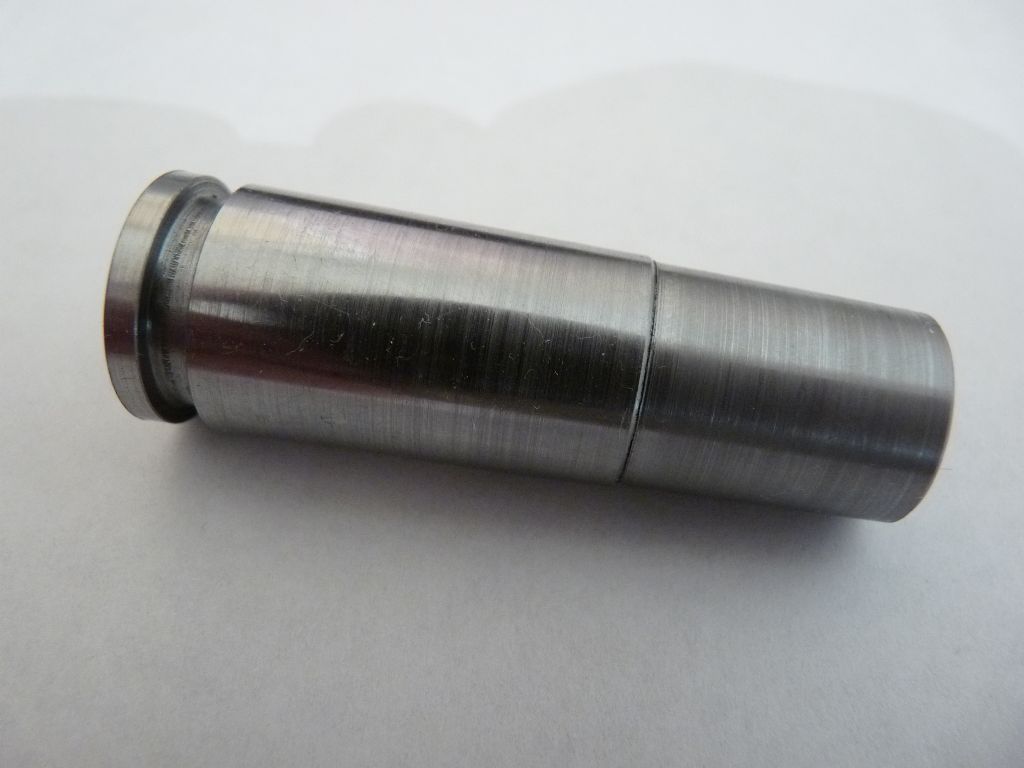I agree with very sharp HSS tools, I finish the cutting edges with a very fine diamond stone.
You could try a HSS tool variation for your finishing cuts – a tangential tool; (this is not the same as the tangential tool holder advertised on the website). I came across the details during an internet search for something else. It's a bit like a normal knife tool but on its side. It works with a distinct slicing action. The swarf comes off like wire-wool and 1/2 thou. cuts are easy to achieve. The photo of the tool looks odd because it was difficult to photograph. The only issue is that you can't finish to a shoulder.
I used it to good effect when attempting to make a missing 7/16 Myford Collet from silver steel.
The second photo shows the difference between insert carbide and the HSS tangential tool finish on the MT2 section. You should note that I did not have the benefit of fine feed, I was manually feeding the set-over topslide to machine the MT2 taper.
Another, not so obvious benefit, came from grinding the front face to 90deg (another variation) which I think eliminates any tool height error which affects taper turning.
I've rarely had good finish with insert tooling, as I tend to use small depths of cut, I'm in no hurry! and insert tooling calls for reasonable cuts, otherwise it just rubs. However, I have found that the Super 7 is able to produce a better finish from carbide with reasonable cuts than an ML7 (in very good condition) probably because the spindle is stiffer on the Super 7.


I'll try and find the original link to the tangential tool if anyone is interested.
Regards
Phil
Jon.






